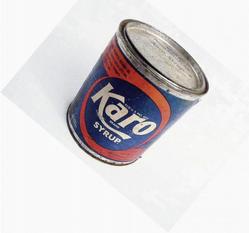

The modern food industry constantly invites us to eat more processed or packaged food. A major portion of your diet now comes out of a can, bottle, box, bag or package. Ideally, you should be able to tell what's in the food you are eating by looking at the ingredient list and the nutrition facts label. However, this is not always the case, and what you see on the label may not always be what you get.
Food Label Accuracy
In the United States and Jamaica, most prepared foods sold are required to contain nutrition labels. In one U.S. Food and Drug Administration survey of nutritional labels, it was found that one in every 10 products had inaccuracies. These results they considered to be excellent.
A food label must be more than 20 per cent off in order for it to violate the law. This means that an item labelled as having 400 calories can legally have up to 480 calories. In addition, government food labs are allowed a 10 per cent margin of error in their tests.
Dr. Joe Mercola, a nutritional expert, points out that some foods, particularly those making low-fat, low-carbohydrate or no-sugar claims, contain drastically different nutrients than are listed on the label. For instance, according to an ABC News report, two donut vendors who claimed their products were low-fat had dramatically understated the calorie and fat content. In one case, a donut described as having three grams of fat and 135 calories was actually a chocolate donut that contained 18 grams of fat and 530 calories. Another product, chocolate chips, labelled zero carbs, actually had 14.2 grams of carbohydrates.
Hidden, misleading ingredients
One of the most common misleading statements on food labels is 'no cholesterol'. This statement can be found on many foods, from vegetable oils to popcorn. Very few people know that cholesterol in your food plays a lesser role in affecting your blood-cholesterol levels than the fat content of the food.
Cholesterol and fat are not the same. When consumers read 'no cholesterol' on a food label, most believe this brand is superior to one which does not make the claim.
An even smaller number of people understand that only animal products contain cholesterol. All vegetable oils and margarines are cholesterol-free, yet all are still 100 per cent fat. People mistakenly assume that low cholesterol means low fat. Certain French fries also claim to be cholesterol free. If French fries were fried in a vegetable oil rather than lard, this claim may be true. However, one French fry is still 15 calories, 40 per cent of which is fat.
Another misleading statement is the '100 per cent vegetable oil' found on packages of crackers, cookies, margarines and shortening. Vegetable oils are mainly unsaturated fat, which is 'heart-healthier' than saturated fat. But if this vegetable oil is hydrogenated, the structure of the new fat is different, and the body responds to it in a similar way as to saturated fat. Therefore, hydrogenated vegetable oil is not nutritionally better than saturated fat. Indeed, it may be worse. Read the ingredient list to see if the vegetable oil is hydrogenated.
Of course, the mother of all food label lies is found on your friendly carton of cow's milk. Some milk labelled 'two per cent' really gets 34 per cent of its calories from fat. The reason the dairy people lie and call it 'two per cent fat' is that they sell more milk if people believe it is a low-fat product rather than a high-fat product. Simple? Yes.
'No salt added' is not the same as 'low sodium'.No salt added refers to no table salt added. These products, therefore, may still contain monosodium glutamate (MSG) or one of the more than 60 other sodium-containing additives. Therefore, if you are on a low-sodium diet, read the ingredient list to make sure it does not contain sodium in another form.
'Sugar-free' or 'sugarless' does not mean the same thing as 'no sugar added' or 'sweetened without sugar'. These are only a few examples of how the consumer can be misled. Bottom line: Read food labels carefully. Educate yourself about what you put in your mouth.
Email Dr. Anthony Vendryes at Vendryes@mac.com, or listen to 'An Ounce of Prevention' on Power 106 FM on Fridays and Saturdays at 8:00 p.m. 
